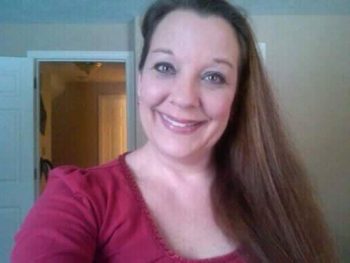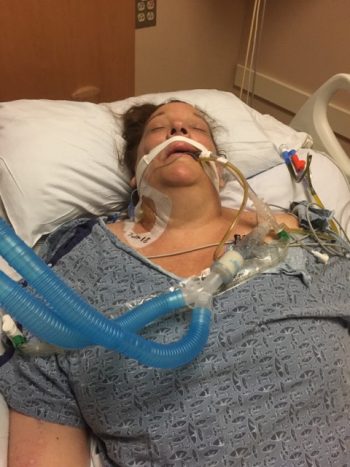Defying the Odds: Robin Surprises Doctors with Resilience
Editor's note: Susan Gonsalves interviewed her friend, Robin, after meeting at a CML support group. Robin shared photos of herself that are inserted within the article, including a photo while she was hospitalized in the intensive care unit.
Robin Howard, 58, calls herself the “Black Sheep of CML” (chronic myeloid leukemia). For the past 3 ½ years, she has struggled to survive with the rare blood cancer as well as a mutation called TET2.
I met Robin online last year through a CML support group for women. She and I go to the same doctor and although we've never met in person, our phone and direct message conversations quickly revealed a kindred spirit.
She graciously agreed to a phone interview in order to share her story.

Meet Robin, a person living with CML
Robin's CML story
Robin has endured long hospital stays in the ICU, prolonged comas on life support, respiratory and kidney failure, and a host of other brutal side effects.
She’s about to start taking her fifth TKI. The others have been toxic for her.
“The doctors told me, `for all intents and purposes, you were dead,’” she recalled, following a more than month long stay in the hospital. “They said I would be 100 percent oxygen dependent and had two to four months to live.”
That was six and a half months ago.
“I’ve proven them wrong. I’m still here,” Robin noted from her New Hampshire home, where she spends much of her time in a hospital bed set up in the living room downstairs.
“For me, none of this has been easy.”

Robin shared an image from one of her hospital stays.
CML just keeps taking
Her situation is a far cry from what CML patients are typically told in the beginning: rare leukemia (“the good kind”), take a daily pill and usually live a normal lifespan.
Nothing about CML seems “normal,” to Robin. “It just keeps taking… my hair, my teeth, muscle mass, short term memory, all of my energy… It’s a mind&%$#.”
Robin can walk short distances and uses a wheelchair at other times. She is attached to a battery-operated condenser that gives her oxygen via a long hose that she refers to as her “leash.”
“I can go upstairs or downstairs with it,” Robin noted, which is an improvement over being tied to a bed. “I can also go out with a much smaller condenser that is operated with a $1,000 battery. It’s a small price to pay to be able to go out.”
Robin's CML routine
Her primary physician, nurse, physical therapist and pain specialist see her at her home, but she travels to Massachusetts for visits with her oncologist/hematologist, who is a CML specialist.
Every two weeks, her husband takes the day off from work to drive Robin to her appointments, which consists of four hours for each appointment: two hours total travel time and another two hours for blood draws and finally consultation with the CML specialist.
Robin noted that she is certain to take a shower the day before as the day’s activities are fatiguing and painful and any movement typically results in being down and out entirely the next day.
“It’s so big a burden to carry around,” she said of CML, but she adds that she keeps fighting for the sake of her loving husband and children.
“My family wants to see me live,” Robin said. “Otherwise, I absolutely would not take a TKI and go through what I keep going through.”
Robin's CML diagnosis experience
Like everything else in Robin’s experience, getting diagnosed and treated did not come easily.
She described a series of hospital visits in New Hampshire and Massachusetts where she was made to “feel like I was crazy.”
At one point, blood work showed a very high white blood count and a doctor instructed her to visit an emergency room immediately. When she got there, the ER personnel would have none of it.
“Who comes to an ER for an elevated white blood count?” she was asked.
Robin continued to research her symptoms and was convinced she had leukemia, based on what she read. Doctor after doctor would not believe her.
Finally, when she began experiencing fevers of 104 and 105 every night, she sought advice from the medical director of a major medical facility’s oncology department.
“I asked, `What do I do next about all these fevers?’ and the doctor replied, `Buy a new thermometer.’”
Let that sink in a moment.
“I walked out. Had I opened my mouth, security would have been called,” Robin said.
Eventually, she found her present CML specialist and was diagnosed but not without a lot of frustration, financial loss, and physical difficulties along the way.
Trying to find a treatment that works
Today, the medical team is trying to come up with a solution, to see if there is a TKI or other treatment that can work fighting the cancer, as well as the mutation, and keep Robin out of the ICU.
Meanwhile, she spends her days watching TV and painting.
“I know a lot about South African Side Neck turtles,” she pointed out, referring to a pet of hers called Happy.
She also enjoys time with a female bearded dragon called Maria and her “little pal,” a dog named Hiccup.
Most of all, she wants to spend as much time as possible with her family.
“They wouldn’t forgive me if I didn’t keep fighting,” Robin said. “So, I will.”
Join the conversation